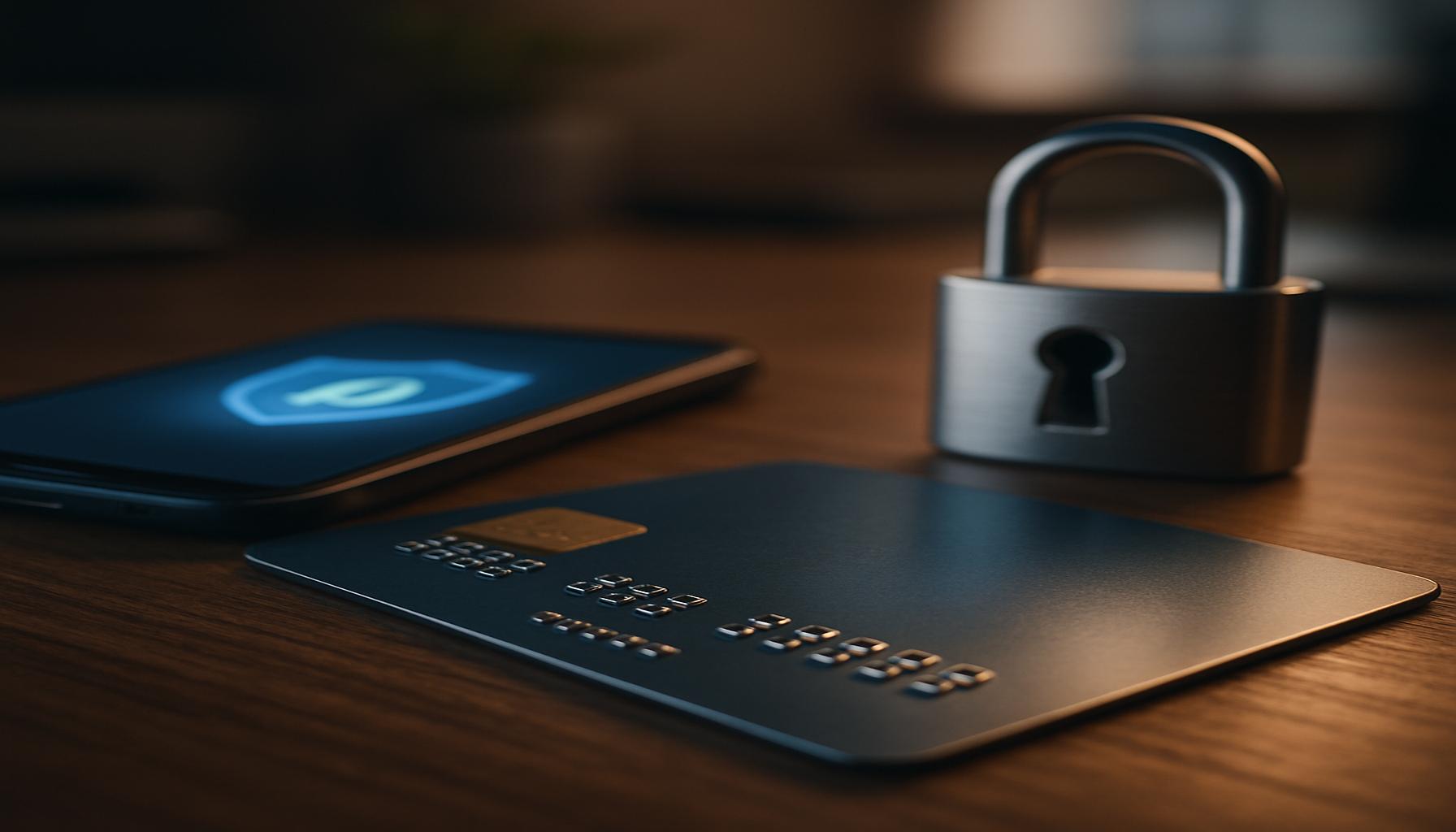Credit Cards and Security: How to Protect Your Financial Information

Understanding the Importance of Financial Security
In today’s digital landscape, the protection of your financial information has become increasingly paramount. While credit cards offer a great deal of convenience for online shopping and in-store purchases, this convenience brings with it the heightened risk of fraud and identity theft. With these risks in mind, it is vital for consumers to arm themselves with knowledge and practical strategies to safeguard their sensitive data during every transaction.
Best Practices for Credit Card Security
Here are some essential practices that can help enhance the security of your credit card usage:
- Use strong passwords: Crafting complex passwords is your first line of defense against unauthorized access. A strong password typically combines uppercase letters, lowercase letters, numbers, and special characters. For instance, a password like “S3cur3@Finance!” is much more secure than “password123.” It’s advisable to change your passwords regularly, at least every three to six months, to ensure ongoing protection.
- Enable two-factor authentication: By adding another layer of security beyond just your password, you can significantly enhance your protection. Many financial institutions and online retailers now offer two-factor authentication, which often requires a code sent to your phone or an email, in addition to your password. This means that even if someone manages to get your password, they won’t be able to access your account without the second form of verification.
- Monitor statements: Regularly reviewing your credit card statements can help you quickly identify unauthorized charges. Set a routine to check your statements weekly or monthly. For example, if you notice a charge of $50 from a store you don’t recognize, it’s essential to investigate and report it immediately to your credit card provider.
Awareness of Common Threats
Understanding the various threats to your financial information can also play a crucial role in preventing financial loss:
- Phishing scams: These scams often come in the form of emails or messages that look legitimate. They may ask you to verify personal information by clicking on a link. Always double-check the sender’s email address and think twice before providing any information, even if the email appears genuine.
- Data breaches: Keep yourself informed about any data breaches at retailers you frequently shop from. For instance, if a major store experiences a breach, they usually notify affected customers. Being proactive in understanding which companies have faced breaches can help you take timely action, such as changing your passwords or monitoring your accounts closely.
- Public Wi-Fi risks: While it’s tempting to shop or bank while sipping coffee at your favorite café, accessing financial information over unsecured public networks can expose you to hackers. Always use a Virtual Private Network (VPN) when connecting to public Wi-Fi to encrypt your data.
In summary, by adopting these practices and staying vigilant about your financial security, you can significantly reduce your risk of becoming a victim of fraud or identity theft. It’s essential to be proactive and informed in this digital age, allowing you to enjoy the convenience of credit cards with peace of mind. Remember, safeguarding your financial information is not just a reactive measure; it’s an ongoing commitment to protecting your financial health.
Best Practices for Credit Card Security
When it comes to protecting your financial information, implementing best practices for credit card security is essential. The convenience of using credit cards brings with it significant responsibilities, and being aware of how to shield yourself from potential threats is a crucial aspect of modern financial management. Here are several practical strategies to help keep your credit card information secure:
- Use strong passwords: Crafting complex passwords is your first line of defense against unauthorized access. A strong password typically combines uppercase letters, lowercase letters, numbers, and special characters. For example, a password like “S3cur3@Finance!” is much more secure than “password123.” It’s advisable to change your passwords regularly, at least every three to six months, to ensure ongoing protection. Additionally, consider using a password manager to help you keep track of your various passwords without the need to remember each one.
- Enable two-factor authentication: By adding another layer of security beyond just your password, you can significantly enhance your protection. Many financial institutions and online retailers now offer two-factor authentication, which often requires a code sent to your phone or an email, in addition to your password. This means that even if someone manages to get your password, they won’t be able to access your account without the second form of verification. This simple step can greatly reduce your risk of having your account compromised.
- Monitor statements: Regularly reviewing your credit card statements can help you quickly identify unauthorized charges. Set a routine to check your statements weekly or monthly. For instance, if you notice a charge of $50 from a store you don’t recognize, it’s essential to investigate and report it immediately to your credit card provider. Many providers now offer mobile apps that allow you to track your spending in real-time, further simplifying this process.
Awareness of Common Threats
Being aware of the common threats that target credit card users is equally important in preventing financial loss:
- Phishing scams: These scams often come in the form of emails or messages that look legitimate. They may ask you to verify personal information by clicking on a link. Always double-check the sender’s email address and think twice before providing any information, even if the email appears genuine. For example, legitimate companies rarely request sensitive information via email, so when in doubt, contact the company directly.
- Data breaches: Keep yourself informed about any data breaches at retailers you frequently shop from. For instance, if a major store experiences a breach, they usually notify affected customers. Being proactive in understanding which companies have faced breaches can help you take timely action, such as changing your passwords or monitoring your accounts closely. Sign up for alerts or use services that provide notifications about breaches.
- Public Wi-Fi risks: While it’s tempting to shop or bank while sipping coffee at your favorite café, accessing financial information over unsecured public networks can expose you to hackers. Always use a Virtual Private Network (VPN) when connecting to public Wi-Fi to encrypt your data. This extra precaution can greatly reduce your vulnerability when using public connections.
In summary, by adopting these practices and staying vigilant about your financial security, you can significantly reduce your risk of becoming a victim of fraud or identity theft. It’s essential to be proactive and informed in this digital age, allowing you to enjoy the convenience of credit cards with peace of mind.
Utilizing Security Tools and Resources
In addition to best practices and awareness of common threats, leveraging the right security tools and resources can significantly enhance your credit card security. Many options are available today that can provide valuable assistance in protecting your financial information.
- Credit monitoring services: Subscribing to a credit monitoring service can be a proactive way to keep an eye on your credit report and alert you to any significant changes or suspicious activity. These services typically notify you of new accounts opened in your name or credit inquiries that you didn’t authorize, allowing you to act quickly if you detect fraud. For example, if your credit report shows an unfamiliar account, you can investigate right away to determine if it’s a result of identity theft.
- Fraud alerts: You can place a fraud alert on your credit report by contacting one of the three major credit bureaus—Experian, Equifax, or TransUnion. This alert tells creditors to take extra precautions when verifying your identity before opening new accounts. Typically, a fraud alert lasts for 90 days but can be extended if you suspect ongoing fraudulent activity. This simple action can provide you with an added layer of protection.
- Virtual credit cards: Some banks and credit card companies offer virtual card numbers, which serve as temporary credit card details that can be used for online purchases. This service generates a new card number linked to your actual credit card for each transaction you make. For instance, if a retailer experiences a data breach, the virtual card number becomes obsolete, keeping your main credit card information safe from exposure.
Understanding Your Rights
Being knowledgeable about your rights as a consumer is an important part of managing credit card security:
- Zero liability policy: Most credit card issuers offer a zero liability policy that protects you from unauthorized charges made with your card. This means that if someone makes fraudulent purchases using your credit card, you are not held responsible for those charges if reported promptly. Familiarize yourself with your card issuer’s policies and ensure that you report any suspicious activities to them within the required time frame.
- The Fair Credit Billing Act (FCBA): This federal law protects consumers from unfair billing practices and provides a mechanism to settle disputes regarding unauthorized charges. If you identify an error on your credit card statement, the FCBA allows you to dispute the charge and withhold payment on the questioned amount while the issue is investigated. Understanding your rights under this act can be empowering and help you address issues swiftly if they arise.
- Identity theft protection: Consider investing in identity theft protection services. These services monitor your personal information across various platforms and will alert you if they detect your data being used fraudulently. Some programs also provide support for resolving identity theft cases, including helping you restore your credit and deal with creditors.
Implementing these tools and understanding your rights enhances your security posture and helps you navigate the complex world of credit cards with greater confidence. By staying informed about your options and remaining vigilant about your financial activities, you can safeguard your financial information more effectively.
Conclusion
In a world where credit cards are a prevalent form of payment, understanding how to protect your financial information is crucial. As we’ve discussed, adopting best practices—like using strong passwords, regularly monitoring transactions, and being cautious about sharing information—forms the foundation of your defense against fraud. Pairing these habits with the right security tools, such as credit monitoring services and virtual credit cards, amplifies your ability to prevent unauthorized use of your accounts.
Additionally, being informed about your consumer rights ensures that you are empowered to take swift action should an issue arise. Knowing that unauthorized charges are generally not your responsibility under a zero liability policy can provide peace of mind as you navigate your financial landscape. Similarly, familiarity with laws like the Fair Credit Billing Act allows you to contest errors effectively, safeguarding your interests in case of billing disputes.
Ultimately, your financial security relies on a combination of vigilance, education, and the right tools. By actively engaging with your finances, utilizing available security resources, and maintaining an awareness of your rights as a consumer, you can protect yourself against evolving threats in the digital age. Prioritizing these elements will not only help you keep your credit card information secure but also cultivate a sense of confidence in your financial decision-making. Stay informed, stay proactive, and you’ll be well-equipped to safeguard your financial future.
Related posts:
How to Apply for Luxury MasterCard Gold Credit Card Step-by-Step Guide
How to Apply for Emirates Skywards Rewards World Elite Mastercard
How to Apply for the Bank of America Unlimited Cash Rewards Credit Card
How to Apply for Delta SkyMiles Platinum American Express Credit Card
How to Apply for the Chase Freedom Unlimited Credit Card Step-by-Step Guide
How to Apply for US Bank FlexPerks Gold American Express Credit Card

James Carter is a financial writer and advisor with expertise in economics, personal finance, and investment strategies. With years of experience helping individuals and businesses make complex financial decisions, James offers practical insight and analysis. His goal is to give readers the knowledge they need to achieve financial success.